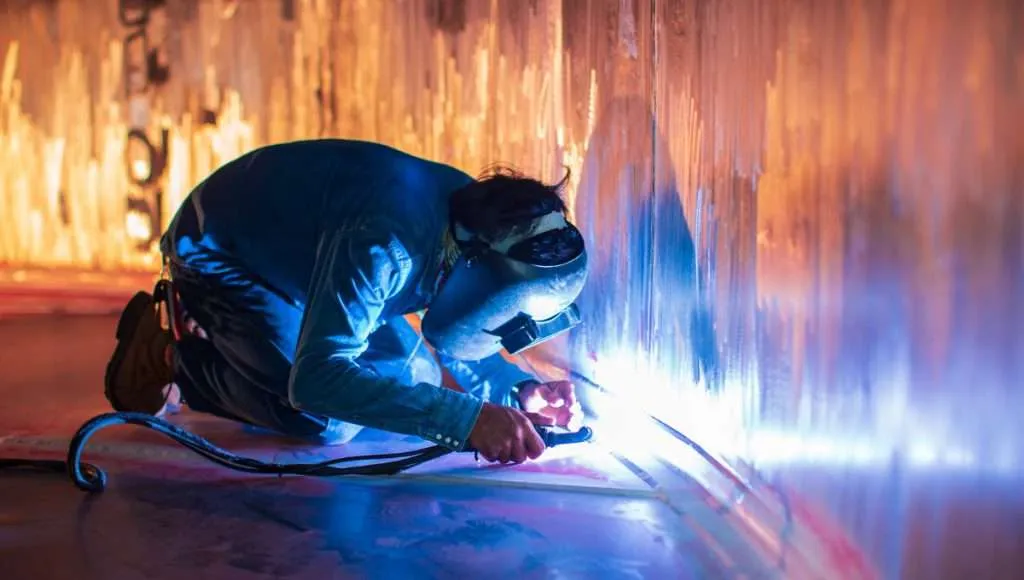Welding copper is a demanding yet indispensable process in many industries. Copper, known for its distinctive red color, has been used by humanity since ancient times. Its softness and malleability facilitate processing, while its excellent thermal and electrical conductivity make it ideal for electrical wiring. Additionally, copper is highly resistant to corrosion, forming a patina on its surface instead of rust, which protects it from further damage.
Preparing Copper for Welding
Proper material preparation is crucial for achieving high-quality welds. Copper surfaces must be free from grease, paint, rust, and other contaminants. Cleaning methods include wire brushes, chemical cleaners, and grinders. Safety precautions such as helmets, gloves, and protective clothing are essential for safe welding operations.
Choosing the Right Shielding Gas
Shielding gas plays a crucial role in protecting molten metal from oxidation during welding. Argon is the most commonly used shielding gas for welding copper. Helium, due to its lower density, provides better coverage of the weld area and reduces welding time. A combination of argon and helium optimizes shielding gas delivery, improving weld quality.
Welding Copper with Electrode (SMAW)
Shielded Metal Arc Welding (SMAW), or electrode welding, is the simplest form of arc welding but has limitations when welding copper. Challenges include high fluidity of the metal, limiting welding positions, and emission of harmful contaminants. Welders must work in flat or horizontal positions, and the welding efficiency largely depends on the operator’s skill.
Choosing Electrodes for Copper
Specialized coated electrodes minimize oxygen and hydrogen absorption when welding copper and its alloys. The electrode designation indicates its chemical composition, such as copper (Cu), aluminum (Al), tin (Sn), manganese (Mn), and nickel (Ni).
Examples of Electrodes for Welding Copper:
- BRONWELD CuAl: Used for welding copper, including brass and bronze, offering high strength and resistance to wear and corrosion.
- BRONWELD CuSn: Enables welding copper and its alloys, as well as joining copper with steel and iron, suitable for surfacing steel and iron components.
- ESAB OK 94.25: Designed for welding copper and its alloys, especially brass and bronze, and can be used for joining these alloys with steel and repairing cast iron “cold.”
MIG Welding Copper
MIG (Metal Inert Gas) welding of copper is conducted under a shield of inert gases such as argon or a mix of argon and helium. Copper is welded using direct current, and the surfaces typically do not require preheating or additional preparation beyond removing contaminants and oxides. While quick and cost-effective, the method may yield lower weld quality compared to other techniques. Choosing low-alloy copper wires enhances joint strength.
Examples of MIG/MAG Wires for Copper:
- MIGWELD CuSi3Mn: Copper-based wire with silicon and manganese additives, suitable for welding zinc-coated steels.
- MIGWELD CuAl8Ni2: Used for welding copper and joining it with steel, including galvanized steel, resistant to mechanical wear and corrosion.
TIG Welding Copper
TIG (Tungsten Inert Gas) welding is a precise technique for welding copper. It uses an electric arc between a non-consumable tungsten electrode and the copper surface, shielded by argon or a mixture of argon and helium. TIG welding produces aesthetic, high-quality welds free from porosity and defects. This method allows full control over the welding process, crucial for welding thin materials. Drawn tungsten electrodes are commonly used for TIG welding copper.
TIG Rods for Copper Welding
TIG rods for welding copper must ensure high weld quality and mechanical properties. Common types include:
- ERCu: Composed mainly of pure copper (over 99%), suitable for welding copper due to its good electrical and thermal conductivity.
- ERCuSi-A: Contains approximately 97% copper and 3% silicon, enhancing weld fluidity and strength, suitable for welding copper and its alloys like brass and bronze.
Conclusie
Welding copper requires specific knowledge and skills to achieve the desired weld quality. Choosing between MIG, TIG, or electrode welding methods depends on project requirements, material thickness, and desired weld quality and efficiency. Each method has its advantages and is suitable for different applications, highlighting the importance of selecting the right technique for specific conditions and application needs.

